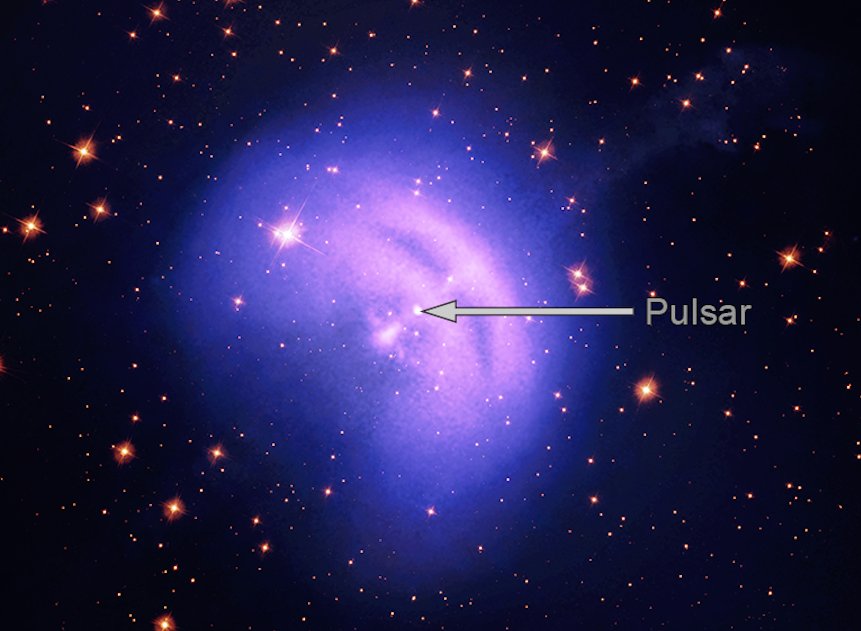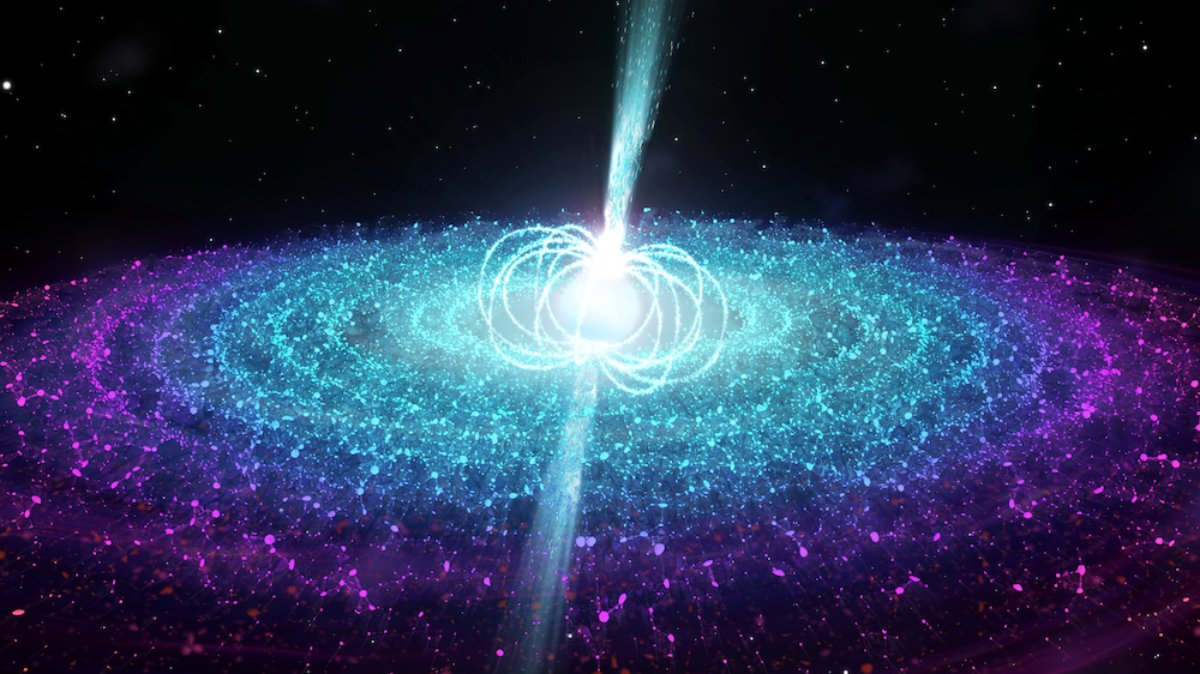The universe is full of extreme space phenomena, and among the most mysterious are neutron stars and pulsars. These strange space objects come from huge stars that blew up as supernovae. They leave behind very dense, fast-spinning cores. Neutron stars are small, usually about 20 kilometers wide. But they have strong gravity and powerful magnetic fields. This makes them incredibly interesting in astrophysics.
Neutron stars and pulsars push the boundaries of physics. They offer insights into how matter behaves under extreme pressure and strong magnetic fields. Studying neutron stars and pulsars lets scientists explore space-time, nuclear physics, and exotic matter.
In this article, we will look at neutron star properties. We’ll also discuss new pulsar discoveries. Finally, we’ll see how these extreme objects help us understand the universe. Get ready to explore the weird and extreme world of neutron stars and pulsars. Whether you’re an astronomy fan or just curious, this journey will be fascinating!
What Are Neutron Stars?

Formation and Properties
A massive star ends its life with a supernova explosion. This blast sends its outer layers flying into space. If the core’s mass is between 1.4 and 3 times that of the Sun, it becomes a neutron star. It does not form a black hole. This results in a compact, incredibly dense object composed mostly of neutrons.
Key neutron star properties:
- Extreme Density: A single sugar-cube-sized portion of a neutron star would weigh a billion tons on Earth.
- Intense Gravity: The surface gravity is about 2 billion times stronger than Earth’s, capable of bending light around the star.
- Rapid Rotation: Some neutron stars spin hundreds of times per second, creating strong electromagnetic emissions and regulating their periodic pulses.
- Powerful Magnetic Fields: Their magnetic fields can be trillions of times stronger than Earth’s, affecting surrounding space and radiation.
- Exotic States of Matter: The immense pressure may break neutrons into subatomic particles, potentially creating strange matter or a quark-gluon plasma.
Types of Neutron Stars
- Regular Neutron Stars: The simplest type, formed by a supernova, containing an ultra-dense core of neutrons.
- Pulsars: Rapidly rotating neutron stars emitting beams of electromagnetic radiation.
- Magnetars: Neutron stars with hyper-powerful magnetic fields, responsible for extreme X-ray and gamma-ray bursts.
- X-ray Binaries: Neutron stars pulling matter from a companion star, heating up and emitting X-rays.
The Discovery and Study of Pulsars
What Are Pulsars?
A pulsar is a type of neutron star that emits regular pulses of electromagnetic radiation. This radiation is detected as radio waves, X-rays, or gamma rays. Pulsars are like cosmic lighthouses. They send out beams of radiation that sweep across space as the star spins.
The First Pulsar Discovery
In 1967, Jocelyn Bell Burnell and Antony Hewish discovered the first pulsar, known as CP 1919. At first, the precise, repeating radio signals were so regular that some scientists speculated they could be from an alien civilisation. Eventually, it was determined that these signals were emitted by a rapidly spinning neutron star.
Notable Pulsar Discoveries
- PSR B1913+16 (Hulse-Taylor Pulsar): This pulsar, discovered in 1974, provided indirect evidence for gravitational waves, confirming a key prediction of Einstein’s General Relativity.
- PSR J1748-2446ad: The fastest known pulsar, spinning at an astonishing 716 times per second.
- Magnetars: A special class of pulsars with supercharged magnetic fields, responsible for intense X-ray and gamma-ray bursts.
- PSR B1257+12: The first pulsar discovered to have orbiting planets, proving that planetary formation can occur under extreme conditions.
The Role of Neutron Stars and Pulsars in Astrophysics

Testing the Limits of Physics
Because neutron stars are so dense and extreme, they provide a natural laboratory for testing physics under conditions that cannot be replicated on Earth. Studying neutron stars helps scientists explore:
- Quantum mechanics and particle physics under ultra-high densities, helping to investigate exotic states of matter.
- General relativity, as neutron stars bend space-time in extreme ways, testing Einstein’s theories in extreme gravity.
- Nuclear physics, since their interiors may contain exotic forms of matter, like quark-gluon plasma, which may reveal clues about the early universe.
- Magnetohydrodynamics, with neutron stars demonstrating the most extreme electromagnetic fields known to exist.
Pulsars as Cosmic Beacons
Pulsars are used as precise cosmic clocks, helping astronomers:
- Detect gravitational waves by observing tiny variations in their pulses.
- Navigate space using their precise timing, a technique that could be useful for future interstellar missions.
- Map the Milky Way by studying how pulsar signals are distorted by interstellar gas and dust.
- Search for dark matter through changes in pulsar timing, which could indicate interactions with unseen particles.
The Future of Neutron Star Research
Upcoming Observations and Missions
New telescopes and space missions are set to revolutionise our understanding of neutron stars and pulsars:
- The Square Kilometre Array (SKA): A next-generation radio telescope that will detect thousands of new pulsars, providing deeper insights into their formation and evolution.
- NICER (Neutron Star Interior Composition Explorer): A NASA mission designed to study neutron stars’ inner structure, helping scientists determine their composition.
- LIGO and Virgo: Gravitational wave detectors that will continue to observe neutron star mergers, shedding light on the origins of heavy elements like gold and platinum.
- The James Webb Space Telescope (JWST): Although mainly focused on exoplanets and deep-space imaging, JWST’s infrared capabilities will aid in observing neutron stars obscured by dust.
- Athena X-ray Observatory: This is a European Space Agency mission. It will study X-ray emissions from neutron stars. This research will give us deeper insights into their composition and behavior.
Open Questions in Neutron Star Research
- What happens inside a neutron star’s core? Could they contain strange matter?
- How do magnetars generate their incredibly strong magnetic fields?
- Can pulsar timing arrays help us detect background gravitational waves?
- Could neutron star collisions create elements like gold and platinum in the universe?
The Cosmic Significance of Neutron Stars and Pulsars
Neutron stars and pulsars are among the most fascinating objects in the universe. Extreme space phenomena test our grasp of physics. They range from gravitational waves to quantum mechanics. New pulsar discoveries will help us learn more about neutron stars. As technology improves, astrophysics will advance further.
These objects are crucial to solving major mysteries in modern physics. They help us understand dense matter and may lead to the discovery of new fundamental particles. Future telescopes and observatories will reveal more secrets. They will help us answer key questions about the universe.
What do you find most fascinating about neutron stars and pulsars? Share your thoughts in the comments below!


